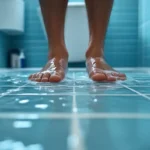Summary
- 🔭 Confirmation by the James Webb Telescope and the Hubble Telescope of an issue with differential expansion of the universe.
- 📜 Triple verification of measurements and publication of results in the Astrophysical Journal Letters in February 2024.
- 🌌 Exploration of methods for measuring expansion rates – study of cosmic microwave background fluctuations and variable Cepheid stars.
- 🚀 Potential implications for cosmology, including a reevaluation of dark energy, with a reference to the 2011 Nobel Prize in Physics.
Recent observations from the James Webb Telescope, following those from the Hubble Telescope in 2019, have highlighted a fascinating anomaly in the expansion of the universe. This discovery questions the assumed constancy of universal expansion, suggesting it might vary depending on where one observes. These results, which underline a possible flaw in our current understanding of the universe, have been verified multiple times by these space observatories, potentially marking a turning point in the field of cosmology.
A Revealing Triple Check
To ensure the reliability of their observations on the differential expansion of the universe, teams using the James Webb and Hubble telescopes conducted a rigorous triple check. These efforts resulted in the publication of a detailed paper in the Astrophysical Journal Letters in February 2024. Adam Riess, the lead author of the study, emphasized the importance of these results, stating, “we may need to reconsider our current model of the universe.” These thorough observations and their meticulous repetition have allowed the elimination of any potential measurement errors, thereby strengthening the credibility of these disruptive findings.
Measuring Expansion Rate: Methods and Contradictions
Scientists mainly use two methods to measure the universe’s expansion rate: the analysis of cosmic microwave background fluctuations and the observation of variable Cepheid stars. Each of these techniques has historically produced reliable results, but the latest observations from the James Webb and Hubble have revealed surprising contradictions between the data collected by these two methods. These inconsistencies suggest that our current understanding of these cosmic processes might be incomplete or inaccurate.
Profound Implications for Cosmology
The discovery of inconsistencies in the universe’s expansion rate raises fundamental questions for cosmology. In particular, it could have major implications for our understanding of dark energy, a mysterious component of the universe that accelerates its expansion. This new development could challenge the established theories since Adam Riess, Saul Perlmutter, and Brian P. Schmidt were awarded the Nobel Prize in Physics in 2011 for their work on this phenomenon.
These recent observations suggest a period of reassessment and possibly revolution in current cosmological theories. The significance of this discovery is not limited to the scientific community but also affects the global understanding of our universe, highlighting the ongoing importance of innovation and verification in scientific research.







